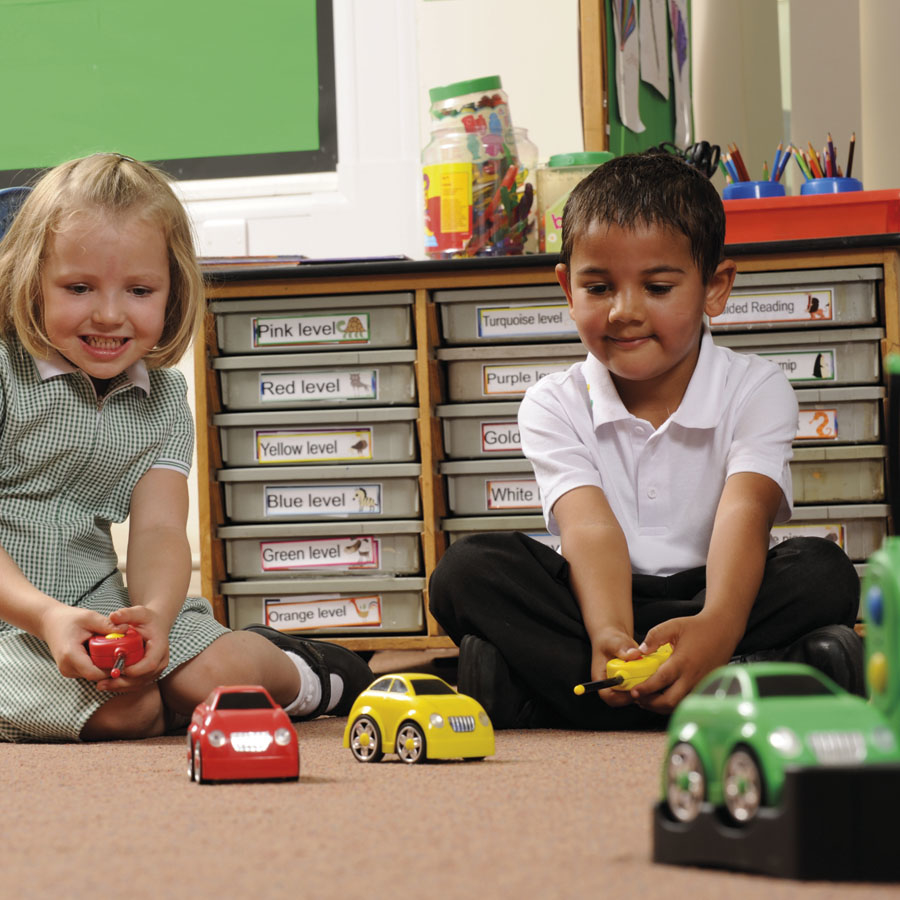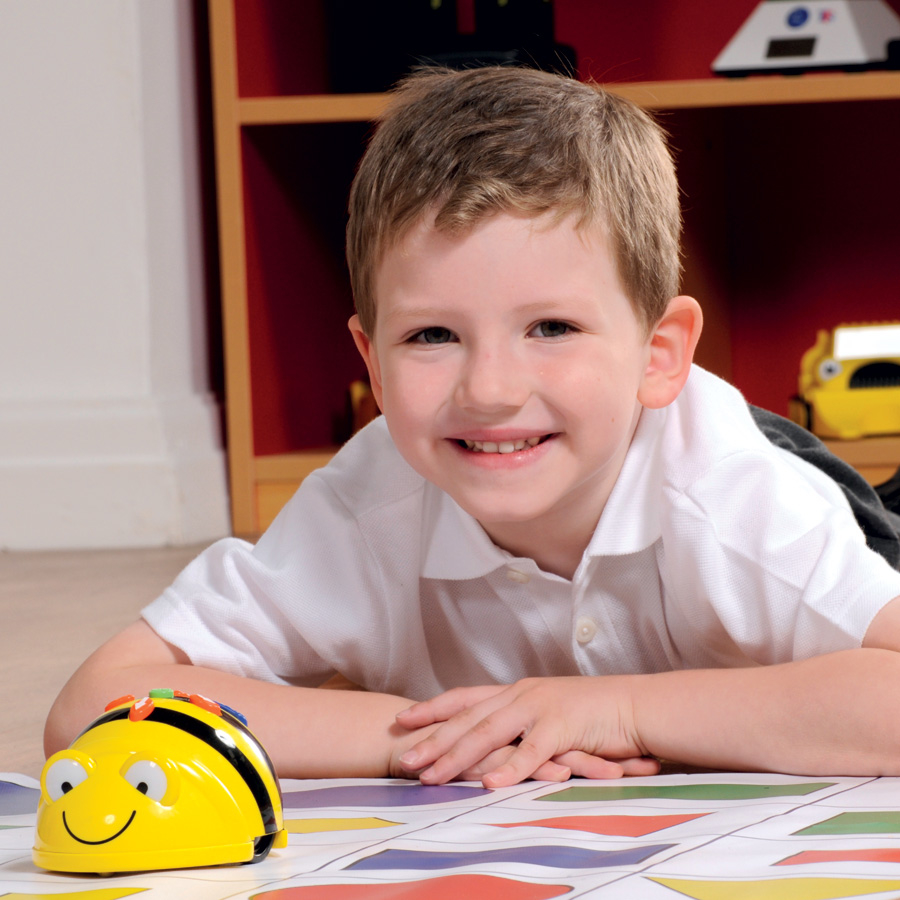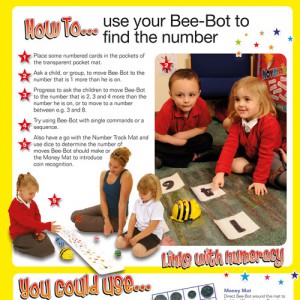Remote control vehicles are a great way for EYFS pupils and Year 1’s to investigate action, reaction and use directional language. Easi-cars, Rugged Racers and Clever Cats provide plenty of opportunities. Children can also practise giving each other instructions to move around the hall in a PE lesson:
- What language is needed?
- Which words or commands?
- How few commands can be used?
- How hard is it for the child being the robot to follow the instructions exactly?

The new National Curriculum for Computing at Key Stage 1 says:
- Understand what algorithms are; how they are implemented as programs on digital devices; and that programs execute by following precise and unambiguous instructions.
- Create and debug simple programs.
- Use logical reasoning to predict the behaviour of simple programs.

The first experience with Bee-Bots will probably be using trial and error to make the device move between two points. What do the buttons do? What happens when more instructions are added?
Using a Bee-Bot along a number track is a good activity to try. If you program Bee-Bot to move 6 steps forward and then two steps back where will it end it up? If it starts on two, moves back one then forwards two where will it get to? This is a straightforward activity which is great to get used to a Bee-Bot whilst also counting on and back as well as making predictions.
Having spent plenty of time using trial and error the activities can move on to planning and sequencing instructions i.e.. writing a program:
- Use simple instruction cards and set the children a challenge to get from point A to point B.
- Put the cards out on a desk in the order they think will solve the challenge – this is their program or algorithm.
- Another pupil could then enter the instructions into the Bee-Bot in the order shown on the cards.
- Press Go and test the program. If the program is wrong, stop the Bee-Bot, debug the instruction card program and try again but don’t forget to clear the memory first.
This is a simple and practical way to introduce young children to programming. It also provides the ideal opportunity to introduce some of the technical vocabulary of computing i.e. ‘program’ and ‘debug’. To extend more able pupils, take away some of the instruction cards (eg. all of the forward and right turn instruction cards) to see if they can still solve the challenges.
A further simple activity could be to select several instruction cards at random and place them in a sequence. Can the children work out where Bee-Bot will get too?
On all of the above mentioned activities, using the Bee-Bot grids and mats adds further support to aid children’s learning and development, as the grids and mats not only provide interesting backgrounds with navigation points, they also clearly indicate Bee-Bots steps.
Andrew Bush – Andy is a developer of Electronic learning resources for TTS and an experienced Senior Consultant for eLearning and ICT. With 10 years teaching experience and 14 years in an Advisory role, Andy really is at the heart of delivering educational technology across the Key Stages. He is up to date with developments in Ed tech, and offers a creative flair to applying learning and teaching within ICT and Computing skills.
You can read the first post from Andrew Bush on the New Curriculum for Computing by clicking here



